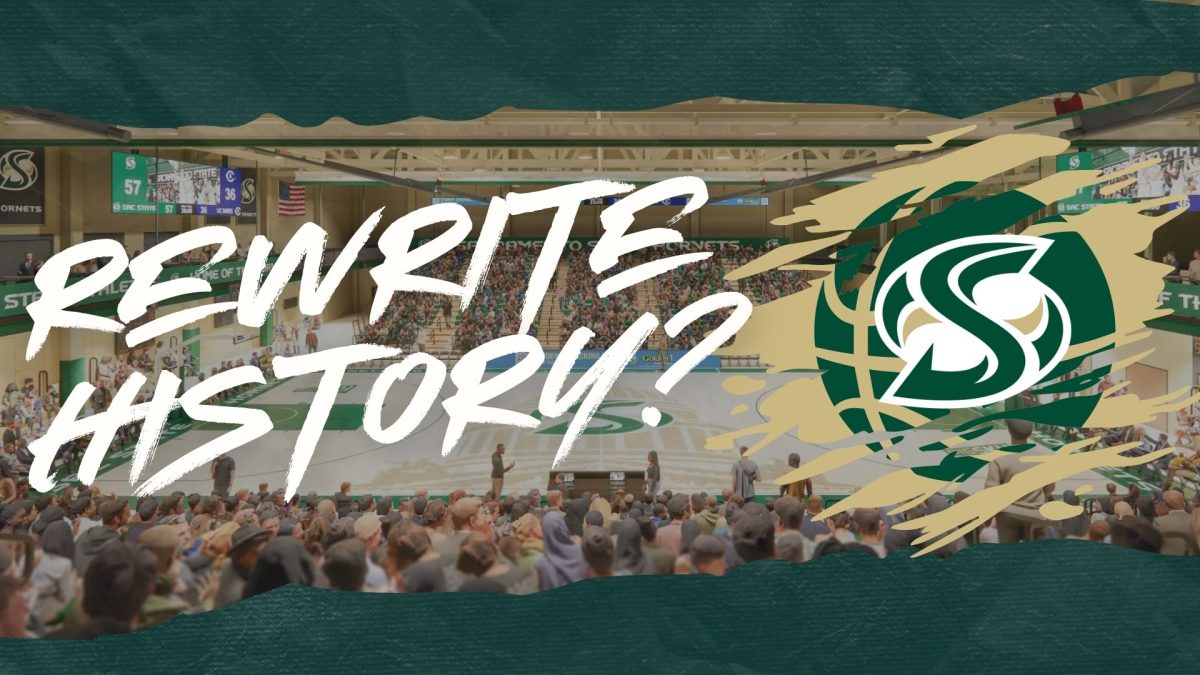We hear about women working in the sports industry falling victim to sexist treatment, but it’s a surreal experience when it actually happens to you.
In the two years I’ve worked as a journalist, I’ve avoided writing sports-related articles. My work mainly resides in video stories and the occasional culture piece.
In early March, I took a stab at covering a college tennis match. Later I wrote another article and then another. I didn’t believe in my potential to write in this male dominated field, but I do now.
With so much up against women in sports media, it would have been easy for me to avoid the section altogether.
I had written a total of four sports stories for The State Hornet in four weeks. And in that short amount of time, I’d been called “sweetie” and “honey” a handful of times by game officials.
The first time this happened, I had walked onto the tennis court with my camera and notepad in hand. The referee, referring to me as “sweetie,” asked me what I was doing.
It quickly registered in my mind what he had called me and in a state of disturbance, I held up my camera and replied, “pictures.”
I felt my credibility as a journalist slip away. These names are often used on wide-eyed, innocent children, not on a 22-year-old journalist. I deserve the same amount of respect as any journalist — male or female.
A part of me at the time was thinking, “Sami, he’s old. He didn’t mean anything by it. Don’t be so sensitive.”
Maybe I shouldn’t let subtle sexist comments bother me, but that does not make it OK for it to happen in the first place.
An accumulation of small incidences like these, built up over time, is a reason why there aren’t more women in the world of sports journalism.
On The State Hornet there are no consistent female sports writers. Not counting my stories, only eight sports articles have been written by female staff members this semester. But this is a bigger problem than a college newspaper.
A 2017 report from the Women’s Media Center found that women tend to cover lifestyle news, education and health more than the male-dominated fields of sports, weather and crime stories. Out of the 20 news outlets the report investigated, only 11 percent of sports reporters were women, compared to 89 percent who were men.
Within that small group of women reporters, sports writers are constantly questioned on their knowledge of the game and are victims of harassment on social media.
A little over a year ago, a video from Just Not Sports stirred conversation about harassment women face, using the hashtag #MoreThanMean.
In the video men read real tweets to sports reporters Sarah Spain and Julie DiCaro. Comments ranged from, “she sounds like a nagging wife on TV today,” to “hopefully that skank Julie DiCaro is Bill Cosby’s next victim.”
How are we supposed to fix the gender gap in this industry if women keep being degraded and harassed? My experience is minuscule compared to what other women in sports media face, but it was still enough to make me question my place as a journalist.
There are a number of female reporters that are breaking the glass ceiling for women such as Samantha Ponder, who in March became the first female host of Sunday NFL Countdown in 32 years.
If we’re going to see change in this industry, we need to focus less on physical beauty and gender biases and highlight talent and experience.



































































































































Bryan Mc Govern • May 12, 2017 at 4:37 pm
Thank you for sharing your story and for speaking up Sami. I’m a journalist in Vancouver and can’t tell you how much it hurts to keep seeing these acts of sexism from readers and other members of the media. Everyone needs to do more and work harder to eliminate these disgusting comments and doubts. I hope you never feel disqualified to do your job and I sincerely hope you continue moving forward as an inspiration for all aspiring sports reporters, no matter the gender, race or sexual orientation.